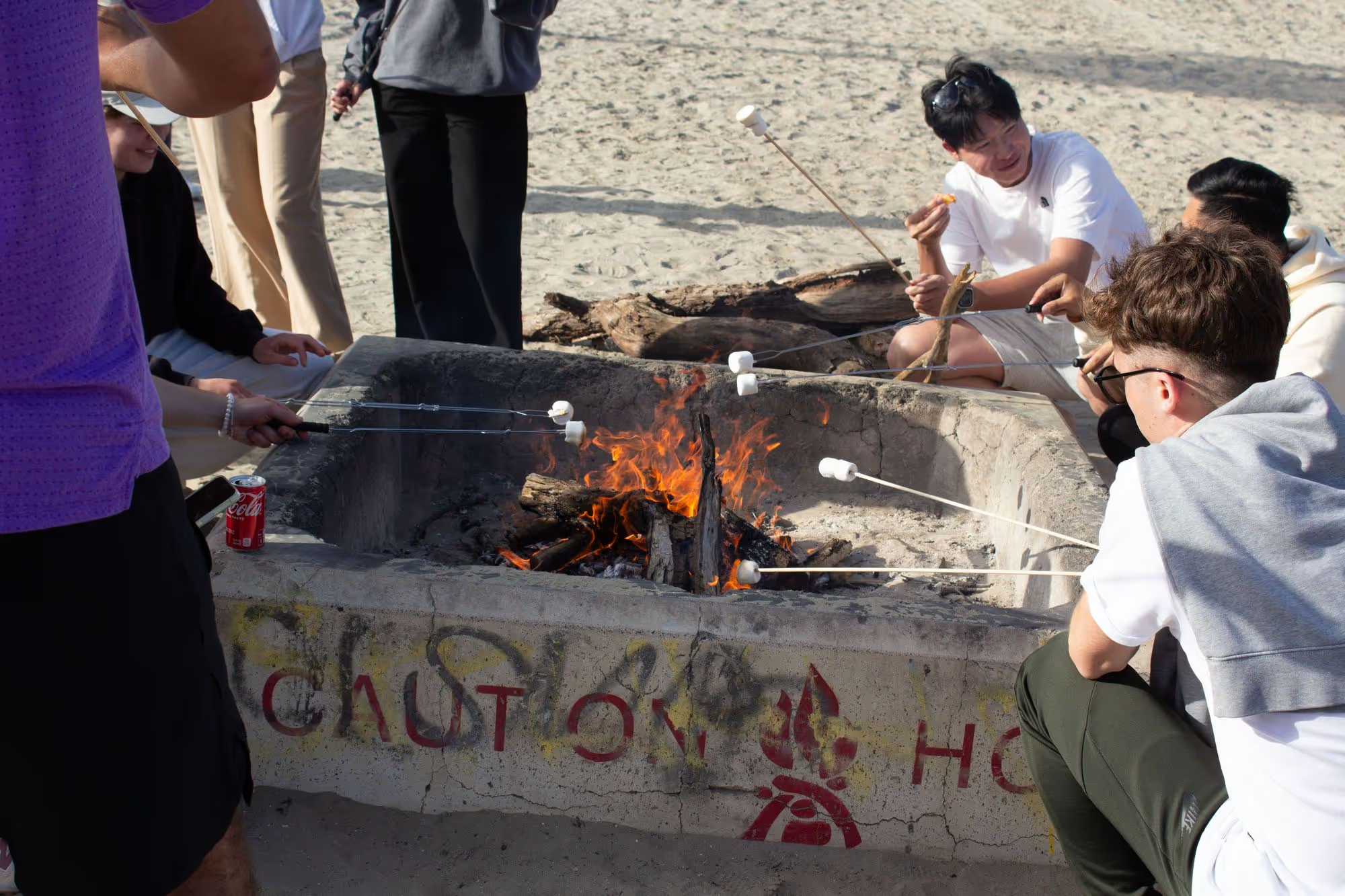The Beginner's Guide To Asking Questions In English
English learners often struggle with forming questions, but understanding the types of questions and their formation can greatly help. The College of English Language in San Diego offers efficient learning methods to master question formation quickly.


Many an English learner, nay, every English language learner has had difficulties with asking questions in English. “How do I form questions?” is one of the most common predicaments learners face, right next to using prepositions correctly, and finding out when to use in, on, and at. Well, first things first, let’s see how you can speed up your question-learning efforts at one of San Diego language schools.

How many types of questions are there in English?
Asking questions is rather difficult in the beginning of your English learning efforts, and it is one of the biggest problems University of California Department of Linguistics identifies with language learners.
So, we know you’re here because you want to learn how to actually form questions in English, but before you can do that, it is good to first get familiar with the many types of questions English has to offer.
As there are numerous questions types in the English language, we are going to concern ourselves with the four basic types you’ll most frequently be using in conversation.
“Yes / No” questions
The simplest question type in English, the “Yes / No” questions, should be the first thing for you to learn how to ask properly, so as to get accustomed to the process of inversion that goes hand in hand with asking questions.
These questions are often used in everyday situations, whether for asking about somebody’s opinion, or inviting an individual to an activity. As they are really frequent, they are pretty useful to master too.
“Wh-” or special questions
“Wh-” questions are the next level of asking questions in English. If you want to inquire about some information, you have to know “Wh-” questions. You cannot further your English if you’re unfamiliar with this type of question.
The name “Wh-” questions stems from the fact that, at the beginning of the questions, you use words that begin with “wh” - what, where, who, which, why, when, how, how many, etc. Yes, some of them begin with “how”, but that’s English for you.
Indirect questions
Indirect questions are also handy to know because they’re used when you want to sound polite and respectful. It is easy for English language learners to fall into the trap of sounding blunt or harsh without wanting to, and it is because they haven’t perfected their indirect questions.
If you’re about to ask a stranger for the time, wording your questions in the manner of “What time is it?” is grammatically correct, but culturally unsound, as it gives off the wrong impression.
Therefore, you should use an indirect question, beginning with modal verbs could or would, and throw in some “please” in there to get “Could you please tell me the time?”. But more on that later.
Disjunctive or “tag” questions
Finally, we come to the type of questions you won’t be using as regularly as the ones mentioned before, but will use them from time to time. You ask a disjunctive question when you need confirmation from the person you’re speaking with, in order to clarify that the information has been well received.
How to form questions in English?
Now, we come to the part you’ve all been waiting for - guidelines for forming questions in English. We’re going to take you through every question type step by step, and try to be as clear as possible.
This can be a confusing affair, especially when you get to see the methods for forming every question type in front of you at the same time. But, don’t get discouraged, it’s all a matter of careful reading and diligent practice. You’ll get the hang of it soon enough.
How do I form “Yes / No” questions?
Easy peasy lemon squeezy!
- Write an affirmative sentence, such as “She is breathtaking!”
- Now, switch places of the noun - “she”, and the verb “to be” - “is”. This process is called inversion.
- Now, you get “Is she breathtaking?”. And, that’s a question someone can answer.
So, these are “Yes / No” questions with the verb “to be”. Now, let’s take a look at questions with “do” or “does”, when the verb is not “to be”.
- So, an affirmative sentence of “She plays football”.
- Now, begin the sentence with “does”, and take the “s” off the main verb “plays”.
- You get “Does she play football?”
The process is the same for “Yes / No” questions in all other tenses, with the exception that you’re going to be using either the verb “do” in a different tense, or the verb “have”, depending on the tense the questions should be in.
How do I form “Wh-” questions?
Now, the tricky bit. But it’s not as difficult as it sounds, don’t worry.
- Let’s take an affirmative sentence with a lot of information, for example “Mike usually plays the guitar in his room at 5PM for half an hour.”
- If you want to know who plays the guitar, you’re going to simply replace “Mike” with “Who”, and get “Who usually plays the guitar in his room at 5PM for half an hour?”.
- For other “Wh-” questions, you’ll need the auxiliary verb, most frequently “do”.
- If you need to know where or what Mike does, you'll, again, delete that piece of information, and ask a question about it, inserting the auxiliary verb - “Where does Mike play the guitar at 5PM for half an hour?” or “What does Mike play in his room at 5PM for half an hour?”. You see, not that difficult.
- Finally, if you need to ask a question about the duration, you need to use “How”, and get - “How long does Mike play the guitar in his room…” You get the idea.
These are the basics of “Wh-” questions, and it’s all you need for the time being. Later on, when you’ve perfected these staples, you can move on to forming more difficult special questions.
How do I form indirect questions?
We’re pretty much already said it when we were explaining what indirect questions actually are. The main thing you need to know about forming indirect questions is that you should try to use modal verbs of different degree, depending on the situation, and that you should try to use “please” whenever you can, as it makes you sound more polite.
- Take a basic question, such as “What time is it?” or “Where’s the bus station?” and start there.
- Now, use a modal verb “could” to soften the question up - “Could you tell me…?” or “Could you please tell me…?”
- We left out the ending on purpose, as you need to take the verb “to be” and place it at the end of the sentence. So, it is incorrect to ask “Could you tell me where is the bus station?”. The correct way is to ask this question is “Could you tell me where the bus station is?”
That’s it, nothing more to indirect questions. Just try to sound as polite as possible, and you’ll be alright.
How do I form disjunctive questions?
The easiest way to learn to form these questions is to think of them as consisting of two parts - the positive and the negative part, or vice versa.
- Take an affirmative sentence, such as “Jane sent him to school”.
- Now, if you want to make a question out of it, all you need is a question tag at the end of the sentence. Mind you, if the first part is affirmative, the question tag is negative, and if the first part is negative, the question tag is positive. So, “Jane sent him to school, didn’t she?”
- As you can see, the question tag at the end depends on the tense and the auxiliary verb that goes with that tense. The same sentence could have a different question tag in another tense, for example “Jane’s sending him to school, isn’t she?”.
- Finally, you can have a negative first part too - “She isn’t going to come with me, is she?”, and you can surely notice that the question tag is positive.
And that’s disjunctive questions done!
“Is there a language school in San Diego I can learn all of this at?”
To be completely honest, there are many private language schools in San Diego you can go to if you want to learn how to form questions, but there is only a single one where you’ll do it quickly and efficiently - College of English Language!
We have locations all over the coast, we employ only the most experienced and enthusiastic teaching staff, and we have all the amenities any English language learner could ever need. If you’re ever at Sunset Cliffs Natural Park, stop by, one of our schools is never too far away, and ask when you can start!
Frequently Asked Questions

Becoming Fluent In English: How To Improve Speaking And Writing Skills
Improve your English speaking and writing skills effectively at the College of English Language in Los Angeles, with personalized instruction, modern teaching methods, and a supportive learning environment.

What's Your Purpose In Studying Abroad?
Before selecting a destination for studying abroad, it's essential to define your learning goals and evaluate how the experience will benefit you in the future.

Reasons To Learn English In San Diego
San Diego's perfect blend of weather, entertainment, nightlife, cuisine, universities, and job prospects makes it an optimal destination for English learners. Choose our school for top-notch education in this dynamic city!
.jpg)
Séjour linguistique aux États-Unis : tout ce qu'il faut savoir avant de partir
Un guide pratique pour réussir votre séjour linguistique à San Diego ou Los Angeles : visas, logement, activités et astuces pour une immersion inoubliable.

What Students Actually Do After Class in San Diego (It’s Not What You Think)
An insider look at what students actually do after class in San Diego—from shared housing and Taco Tuesday to local life—and why these everyday routines matter more for real English progress than most expect.
.avif)
Ein Tag in San Diego: Was dich während deines Sprachaufenthalts erwartet
Wie sieht dein Alltag während eines Sprachaufenthalts in Kalifornien aus? In diesem Artikel begleiten wir dich durch einen typischen Tag bei CEL San Diego – von einem entspannten Morgenspaziergang zum Strand über interaktiven Englischunterricht bis hin zu Surfen, Yoga oder einem BBQ mit Freunden. Erfahre, wie du in einer modernen Unterkunft mit Pool und Fitnessstudio wohnst, amerikanische Nachbarn kennenlernst und das echte kalifornische Lebensgefühl erlebst – alles nur 5 Minuten vom Pazifik entfernt
.avif)
Soft Skills, die du in Kalifornien lernst – und warum sie im Job Gold wert sind
Soft Skills sind heute wichtiger denn je. Erfahre, wie ein Sprachaufenthalt in Kalifornien dir Kommunikationsstärke, Selbstbewusstsein und interkulturelle Kompetenz bringt – und warum das im Job Gold wert ist.

Lagerfeuer am Mission Beach – Ein unvergesslicher Abend während deines Sprachaufenthalts in San Diego
Ein Sprachaufenthalt in San Diego bedeutet Sonne, Englisch und kalifornisches Lebensgefühl. Beim CEL-Lagerfeuer am Mission Beach erlebst du Freundschaft, Spaß und Sprache auf ganz neue Weise.












